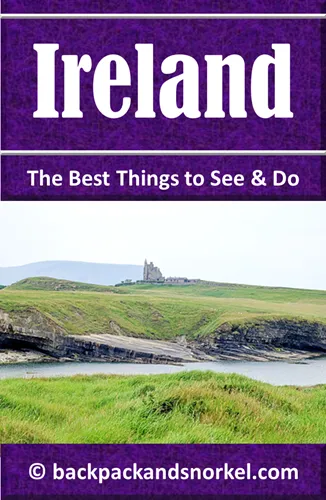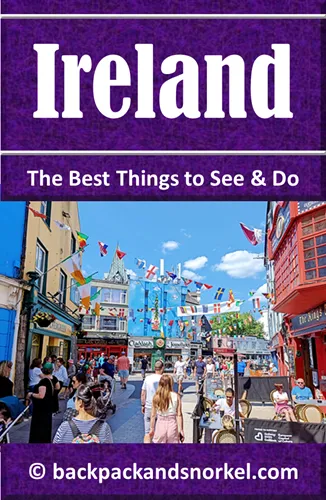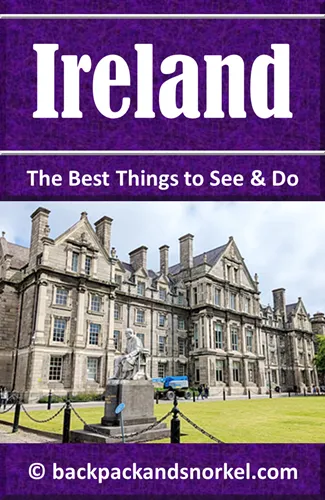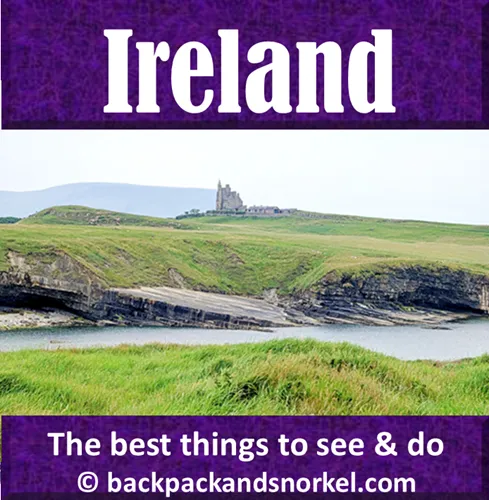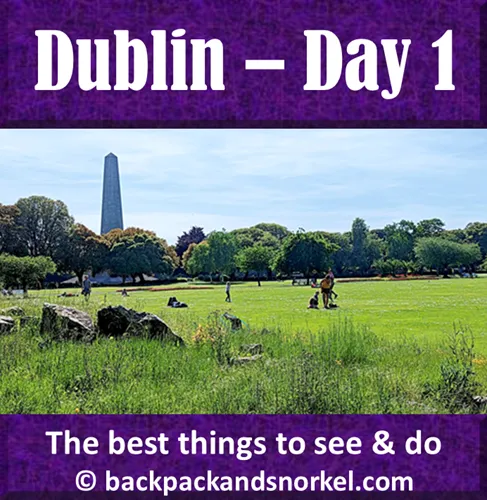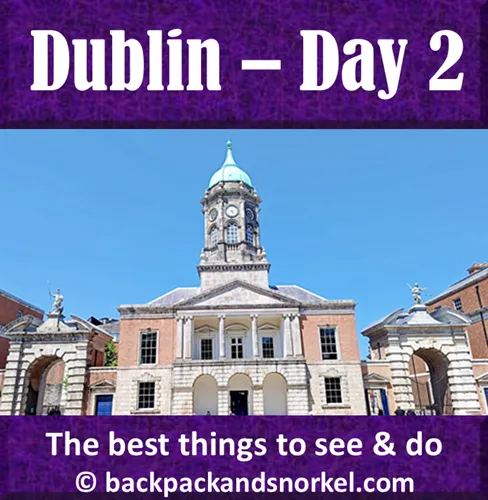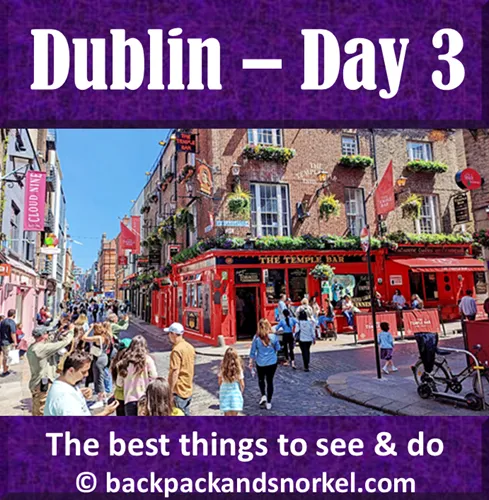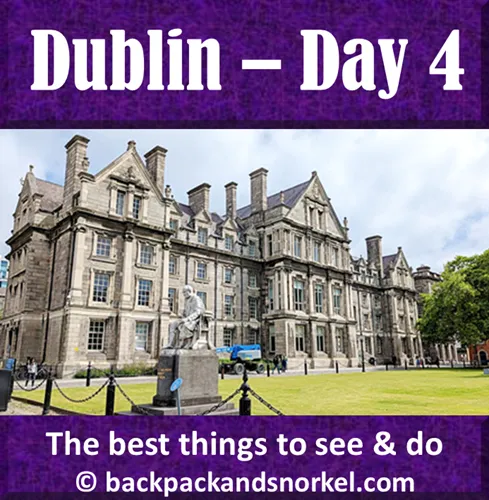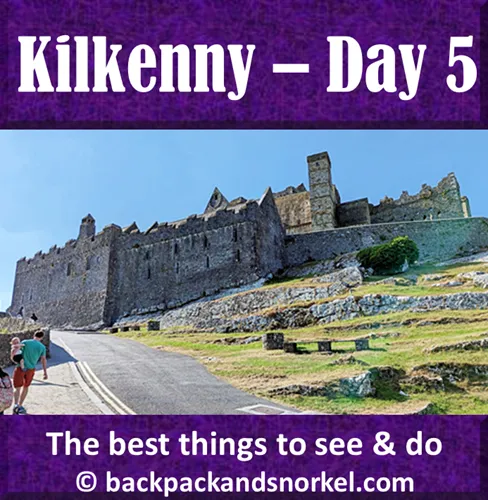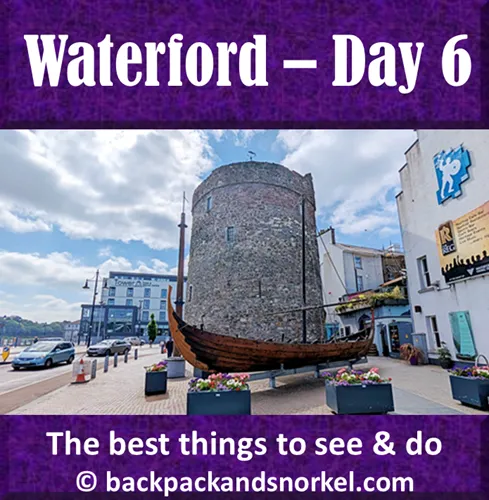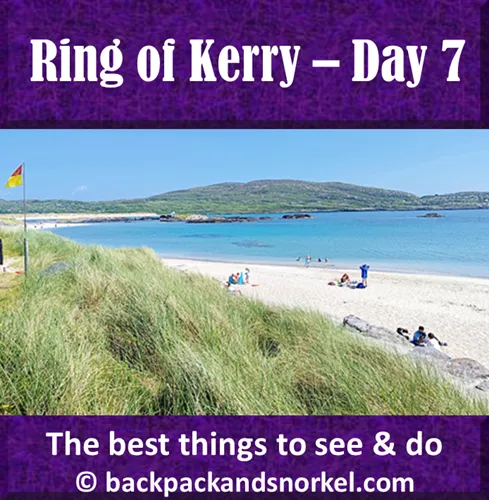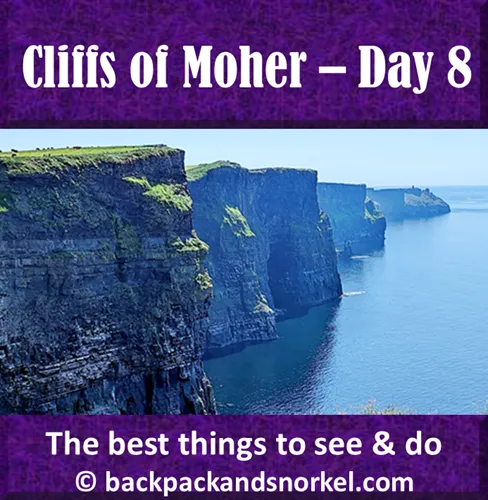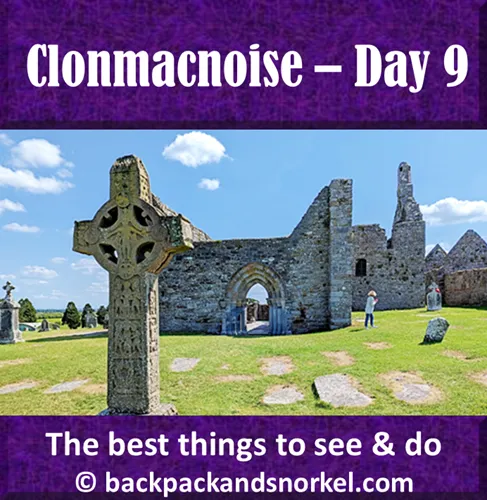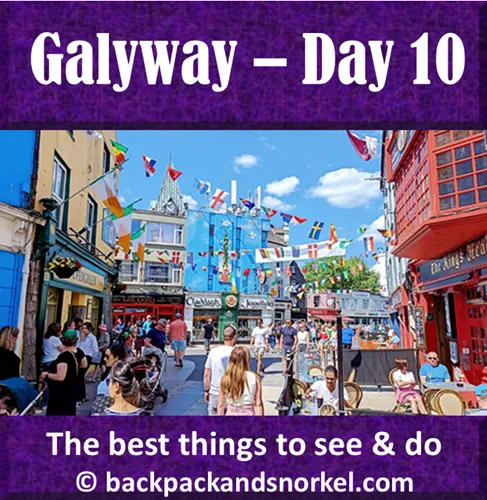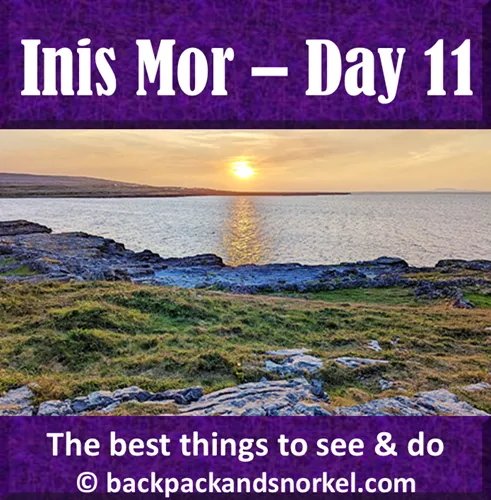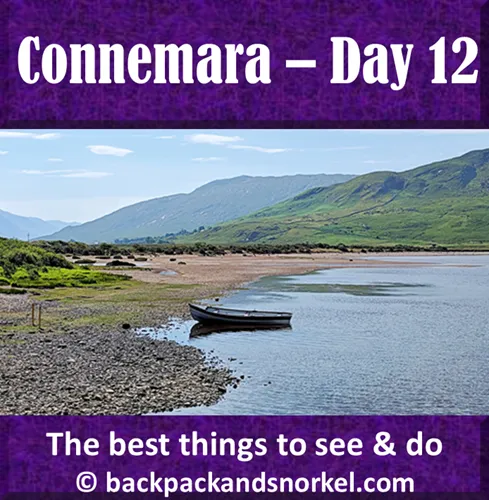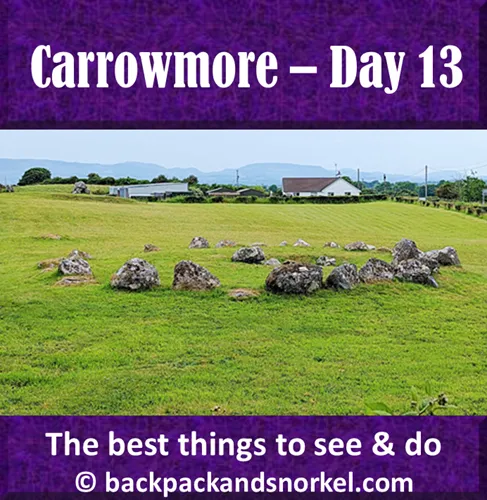Backpack and Snorkel Travel Guide for the highlights between Kilkenny and Killarney: Kilkenny Castle and the Waterord Museums - Ireland Purple Travel Guide
Today, we start with a tour of Kilkenny Castle and then spend much of the day in the Waterford Museums. We provide detailed information and the best things to see and we show lots of photos so you know what you can expect.
The night, however, we will spend in the far west, in Killarney.
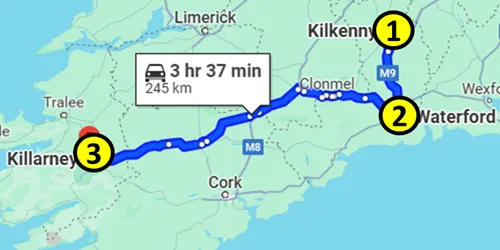
1 = Kilkenny
2 = Waterford
3 = Killarney
Waterford is the oldest city in Ireland and well-known globally for its former glass manufacturing industry. With a population of 60,000 people, Waterford is the 5th largest city in Ireland.
The first settlement was established by the Vikings in 853, but native Irish drove them out by 902. In 914, Vikings settled here again.
In 1167, the Irish failed attempting to conquer Waterford, but were successful in 1170 under Cambro-Norman nobleman Strongbow.
In 1171, King Henry II of England seized first Waterford and then Dublin and made Dublin the capital. Throughout the middle ages, Waterford was Ireland’s second biggest city, after Dublin.
During the protestant reformation, Waterford stayed catholic and was part of the independent Catholic government (confederation of Kilkenny) from 1642 to 1649. This government was defeated by Cromwell and Waterford fell after two sieges in 1650.
In the 19th century, glass making and ship building were two pillars of Waterford’s prosperity.
World renowned Waterford Crystal manufactured glass (e.g. lead glass = crystal) in the city from 1783 until its bankruptcy during the Great Recession in 2009.
Company assets were sold the same year, some production restarted and a new Waterford Crystal Visitor Centre opened in 2010.
Most Waterford crystal is, however, now produced outside of Ireland (Czech Republic, Germany, Hungary, Slovenia).
Chandeliers from Waterford can be found in Windsor Castle, Westminster Abbey, and the Kennedy Center (Washington, DC).
The New Year's Eve Ball that is dropped every year in New York City's Times Square, contains 2,688 crystals from Waterford Crystal.
Among others, also made by Waterford Crystal are:
- Men's professional Tennis Masters Series crystal shield trophies tennis
- US college football AFCA National Championship Trophy
- Masters snooker championship trophy and the Scottish Open snooker championship trophy
- French, Belgian and German Grand Prix in Formula One trophies
- glass tennis racket for Boris Becker
Kilkenny Castle
Anglo-Norman nobleman Strongbow built likely wooden castle on this site in 1173, probably on the site of an earlier residence.
In 1260, the wooden structure was replaced with a square-shaped stone castle that had a tower in each corner. Three of the four towers have survived.
After the death of its owner in 1381, the British Crown seized the building and sold it to the powerful Butler family in 1391.
In 1650, during the siege of Kilkenny by Oliver Cromwell, the east wall and the northeast tower of the Castle were damaged and later torn down.
In 1661, the Butler family converted the castle into a château.
In the 19th century, more remodeling was done and additions were added to the building.
During the Irish Civil War in 1922, Republicans were besieged in the castle by Irish Free State forces and the castle was badly damaged.
In 1935, the Butler family moved out of the castle, sold everything in it, and abandoned it. It took until 1967, until the castle and the land in front of it were sold to the Castle Restoration Committee for a ceremonial £50.
The castle is beautifully restored and definitely worth a tour.
At the time of writing, the castle was open daily with opening hours:
- October to March: 09:30 – 17:00
- April to September: 09:15 – 17:30
- Shorter hours on December 24-26 and 31
Self-guided tours are €8 per adult and guided tours are €12 per adult at the time of writing.
There is free admission to the park and garden - its opening hours vary from those of the castle.
Reserve 2h for the castle and the park and then drive to Waterford.
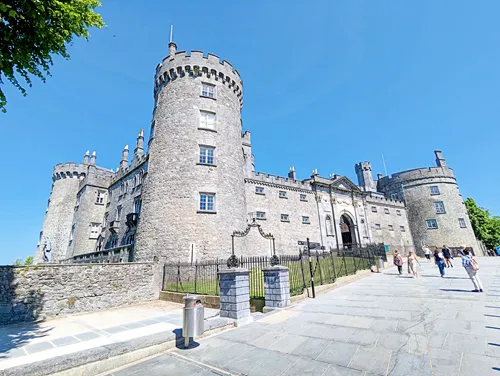
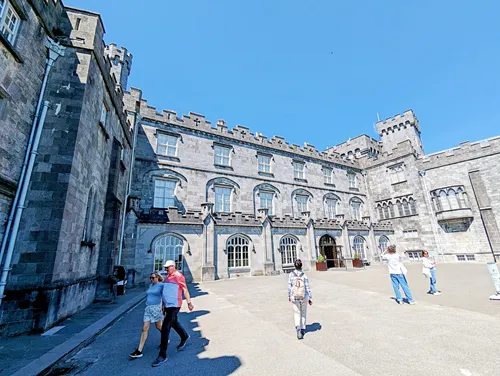
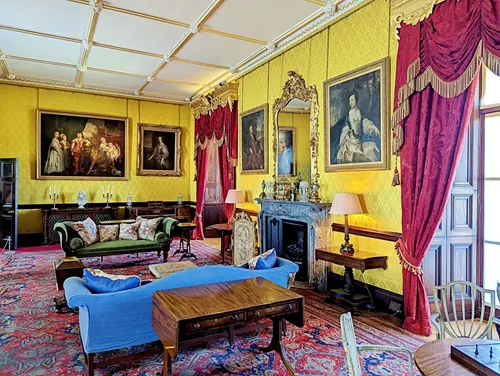
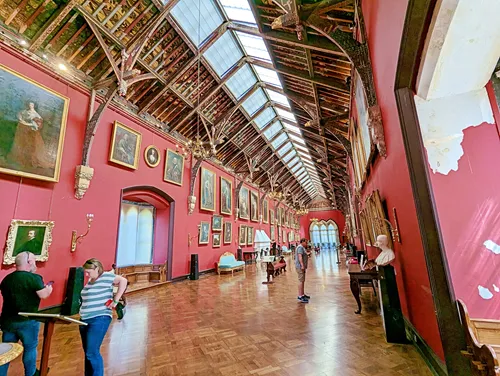
Waterford Medieval Museum
The Waterford Museum of Treasures consists of seven museums, each covering a different topic of Waterford’s history, and each with a separate admission ticket. There are combination tickets if you want to visit more than one museum and, some tickets include a guided tour of Waterford. The museums are located close to each other.
Street parking can be difficult to find in Waterford, but there are paid parking lots close by:
- Bolton St Car Park
- IPairc Clock Tower Car Park
The individual museums that are available are:
- Bishop’s Palace: Built in 1741 as the residence of the Bishop of Waterford, the museum tells the story of Waterford from 1700 to the 1970s. Among the exhibits is the oldest surviving piece of Waterford Crystal from 1789.
- Medieval Museum: This museum tells the story of medieval Waterford in the 13th century Choristers Hall and the 15th Century Wine vault.
- Irish Silver Museum: Silver was an important throughout Ireland’s history since the Vikings settled here. This small museum displays a personal collection of silver treasures from Ireland.
- The Irish Museum of Time: Located in a refurbished gothic-style church, the museum displays clocks of many different styles and mechanisms from many different countries. Some clocks date back to the 16th century.
- Reginald’s Tower: Named after the Viking who founded Waterford in 914, this museum displays Viking artifacts.
- Irish Wake Museum: This museum is a new addition to the Waterford Medieval Museum. Located in a 15th-century Almshouse, the tour will tell you about Irish traditions and superstitions from early Christian times until the 20th century.
- King of the Vikings: Located in a replica of a Viking house inside the ruins of a 13th century Franciscan friary, this attraction features the daily life of the Vikings in virtual reality.
Please be advised that not all museums are open every day and different museums have different opening hours. Please visit the individual museum websites for the current opening hours.
The Medieval Museum is going to be one of the highlights of your Waterford trip. It is the only museum that is not located in a historic building, but in a modern building that was specifically designed for it.
The museum tells the story of medieval Waterford in the 13th century Choristers Hall and the 15th Century Wine vault.
We strongly recommend taking the 45 min guided tour, as it provides a lot more information compared to what you see on the descriptions of each displayed artifact. You should reserve at least 1 hour for this museum.
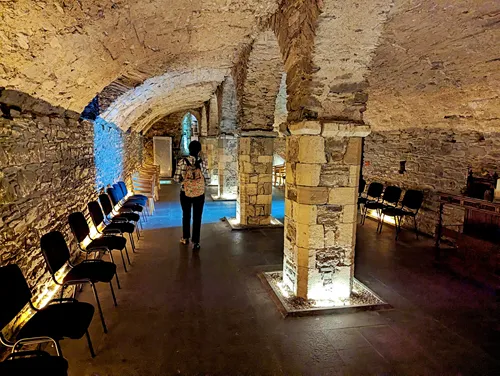
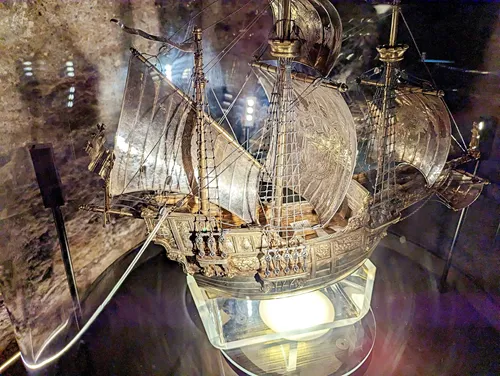
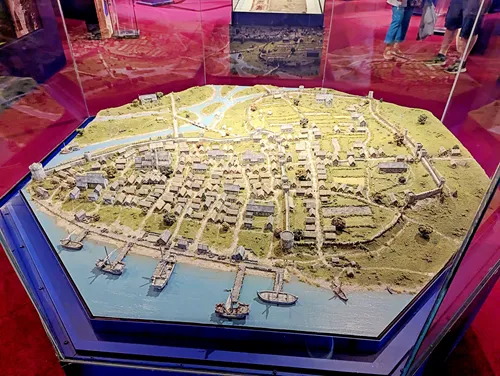
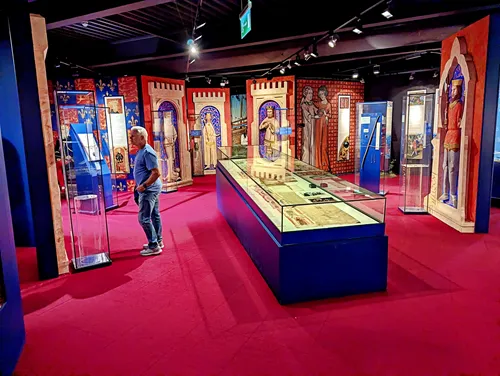
Epic Walking Tour of the Viking Triangle in Waterford
The tour starts in front of the entrance of the Bishop’s Palace. Officially, it takes 45 min, but when we were there, our tour was a bit over 1 hour and we were the only guests.
The tour was very informative and we definitely recommend it.
The tour covers six national monuments (built from 1190 to 1783) in Waterford, some more modern sculptures, and provides lots of background information.
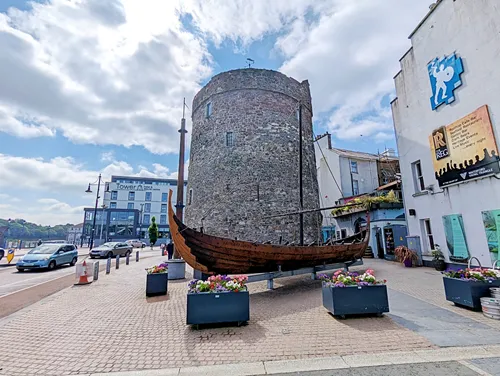
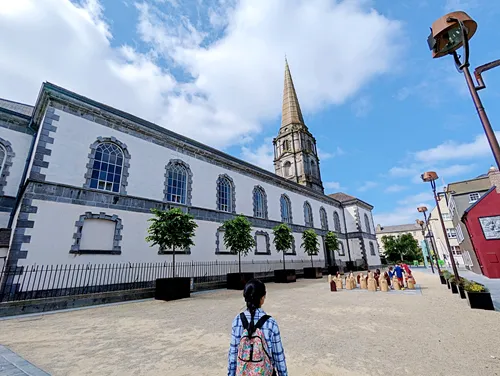
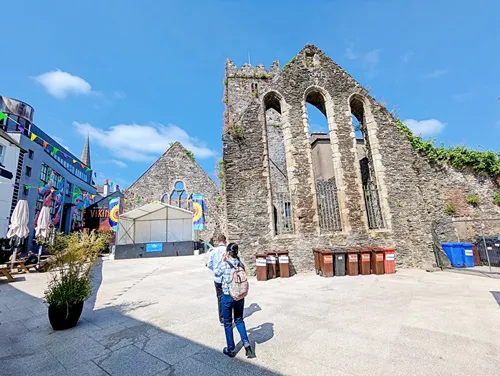
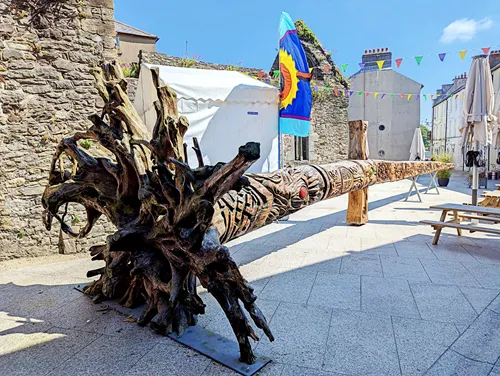
Irish Silver Museum
Located right next to the Medieval Museum, the Irish Silver Museum is basically a silver and jewelry store with a two-room attached exhibition of items made of silver. Among them are a sword that was given to the city by King Edward IV, silverware which belonged to the famous writer Jonathan Swift, and a silver coin that was produced in 742 in, what is now, Iraq that came to Waterford around the year 850.
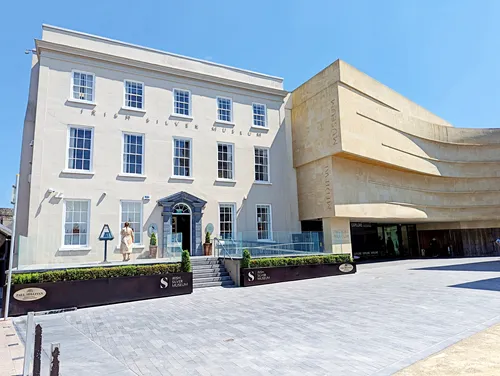
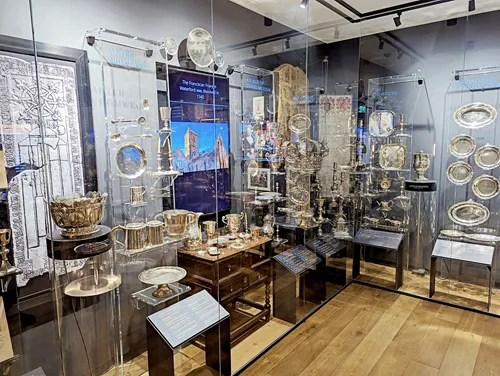
The Museum of Time
Located in a refurbished gothic-style church, the museum displays clocks of many different styles and mechanisms from Ireland and many other countries.
Among them are turret (tower) clocks from the 1590s and 1760s, and the earliest pendulum clock from 1663.
When we visited, we were engaged by a very nice and knowledgeable gentleman who volunteers at the museum and who was happy to give us a guided tour. Without him, this would have been a nice small museum. With his explanations, we enjoyed it a lot more.
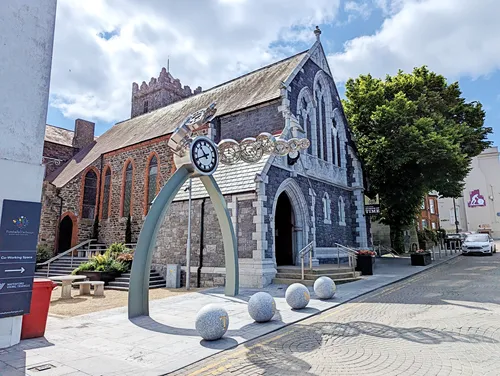
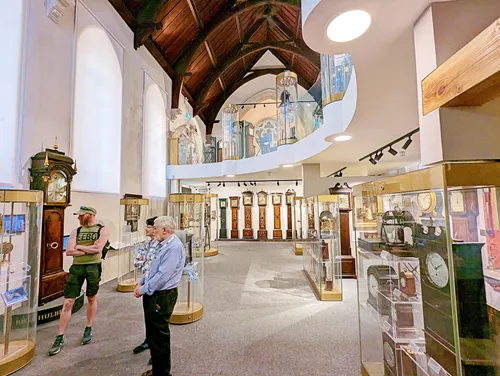
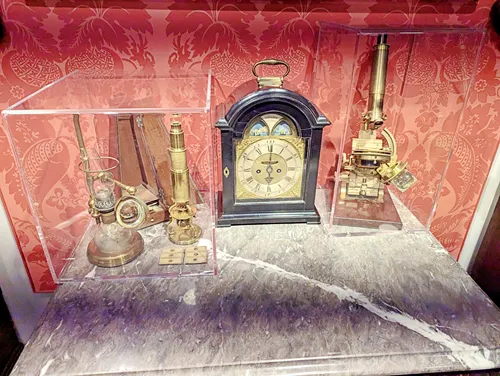
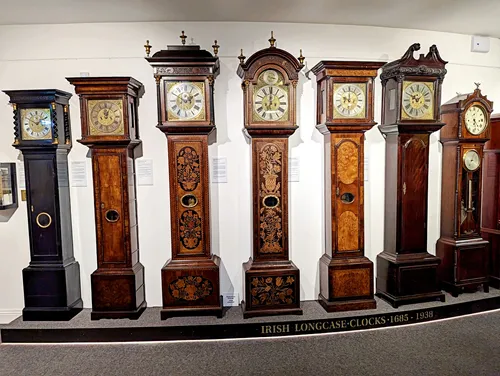
Bishop’s Palace
The Bishop's Palace Museum is located in a Georgian building that was built in 1741 for the Bishop of Waterford.
The Museum covers Waterford’s history and notable people from 1700 to 1970.
You will find 18th-century Isish glass, silver, furniture, and paintings. Topics that are covered include the struggle for Irish independence, the early Irish State, World War I and II, life in Ireland through the 1940s and 1950s, the Showband years, and Waterford Sporting Heroes.
The most notable exhibit is a Penrose Decanter from 1789, which is the oldest surviving piece of Waterford Crystal.
While you can visit some of the exhibits on the ground floor by yourself, you will need to join a guided tour with a re-enactor to visit the upper floors.
The tour includes a video and, towards the end, celebrates local celebrities in music, sports, and media.
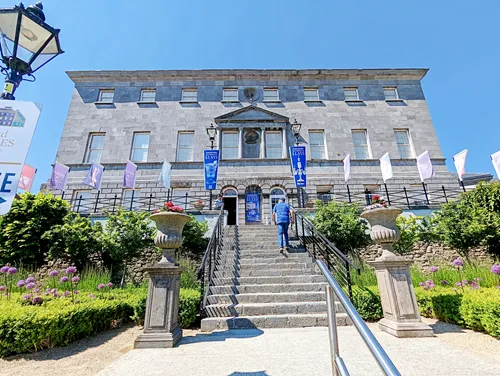

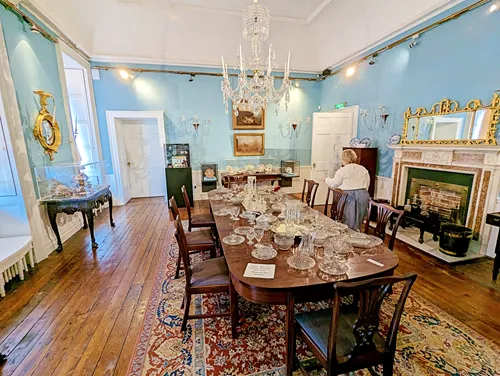
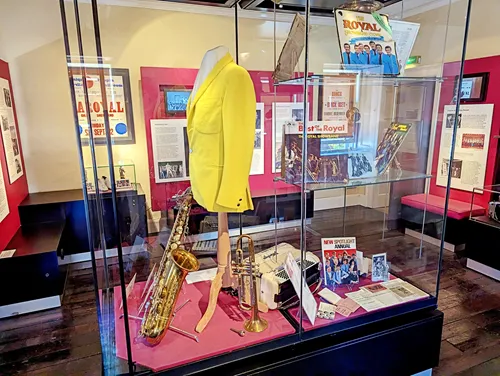
Reginald’s Tower
Reginald’s Tower is Waterford’s iconic landmark. It was likely named after one of the Viking kings who ruled Waterford. Some claim that it was named after the Viking who founded Waterford in 914.
The tower is in continuous use for more than 800 years and it is Ireland’s oldest civic building.
The original tower that stood on this site was built at some point in time after 914. It was re-built by the Anglo-Normans either in the late 12th century or between 1253 and 1280 that was part of medieval defensive walls that enclosed the city.
Of the 17 towers of the medieval city wall, only 6 survived and Reginald’s Tower is the largest of those.
The two top floors were added in the 15th century.
Reginald’s Tower is 54 ft (16.5 m) tall, and 42.5 ft (13 m) in diameter. Its walls are 10 ft (3 m) thick at the base, and 7 ft (2 m) thick at the top.

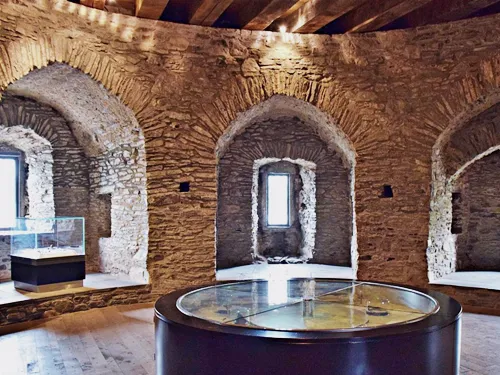
Irish Wake Museum
The Irish Wake Museum covers traditions and superstitions about life and death from early Christian times until the 20th century.
It is located in a 15th-century Almshouse, which is Ireland’s oldest urban domestic building.
Access to the museum is by guided tour only and your tour guide will wear a black widow’s dress.
King of the Vikings
Located in a replica of a traditional Viking long house is the King of the Vikings high tech adventure.
After a short introduction, participants put on a VR headset that transports them back into the time when Vikings ruled Ireland. You get to be among the Vikings for 30 minutes and experience how they lived, farmed, built their houses, and raided other settlements.
This high-tech adventure is closed on Tuesdays, and early January through mid-March for annual maintenance.
Tour of the House of Waterford Crystal
Production of lead glass, also called crystal, in Waterford can be traced back to 1783, when George and William Penrose started the Waterford Glassworks, where they produced flint glass (high refractive index glass). They hired the best workers and quickly produced ornamental flint glass of very high quality. In 1785 they hired John Hill who was an expert compounder, who knew how to mix components to make highest quality glass and he also introduced a polishing step that removed the frosted appearance of the glass and gave Waterford Crystal its signature appearance.
After William Penrose died in 1796, the company was sold in 1799.
New laws enacted in 1811 and 1823 put heavy duties onto all crystal that was exported and eventually led to the closure of the business in 1851.
Attempts to revive crystal production in Waterford were made in the 1930s, but WWII delayed any progress.
It took until 1947, until a new glass factory was opened in Ballytruckle, a suburb of Waterford.
The company made its first profit in 1955 and in the 1960s, it became one of the world’s most renowned hand-crafted crystal manufacturers.
To satisfy global demand, a new factory was opened in Kilbarry in 1973.
In 1986 Waterford Glass Ltd. bought Wedgwood, who are one the greatest ceramics companies in the world.
In 1999, Waterford manufactured the 6 ft (1.8 m) diametric crystal ball that was lowered down the pole during the New York year 2000 countdown and that an estimated 1.2 billion people watched.
The financial crisis of 2008 coupled with declining demand, and high labor costs, hit the Waterford Wedgwood Group hard. In 2009 the company went into receivership, closed the Kilbarry plant and eventually transferred most of its assets (not the Kilbary plant and its visitor center) to US investor KPS Capital Partners.
KPS Capital Partners transferred the company together with other brands into a holding company that was bought by the Finnish Fiskars Corporation in 2015.
Today, most Waterford crystal is produced in Slovenia, Czech Republic, Hungary, and Germany. The factory in Waterford produces more than 45,000 pieces of hand-crafted crystal.
At the visitor center, you can buy tickets for factory tours, and private VIP tours. And, of course, you can buy Waterford Crystal at the retail store.
Please be advised that tours from November through February only occur Mondays through Fridays, while tours from March through October are given 7 days a week.
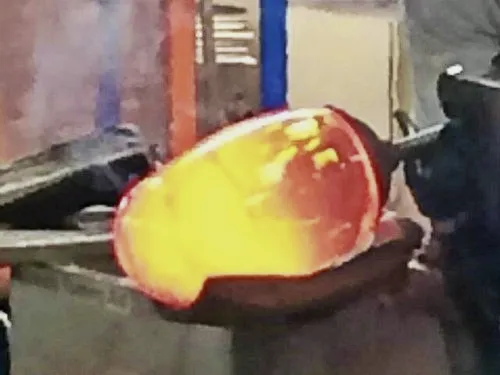
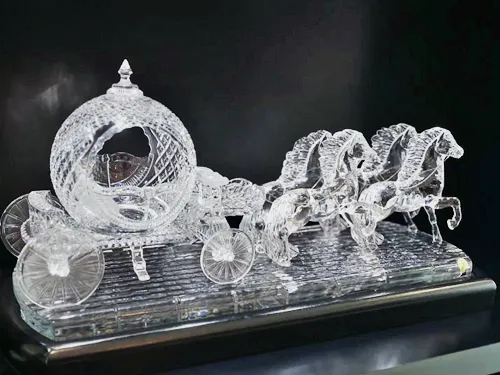
Where to stay in Killarney
With a population of approx. 14,500 people, Killarney is a small town, but it has lots of hotels and Airbnb. We don’t really have a recommendation on where to stay in Killarney, as you can easily get everywhere by car.
Here is the accommodation that is available when you visit:
Where do you want to go now?
Author: Rudy at Backpack and Snorkel
Bio: Owner of Backpack and Snorkel Travel Guides. We create in-depth guides to help you plan unforgettable vacations around the world.
Other popular Purple Travel Guides you may be interested in:
Like this Backpack and Snorkel Purple Travel Guide? Pin these for later:
